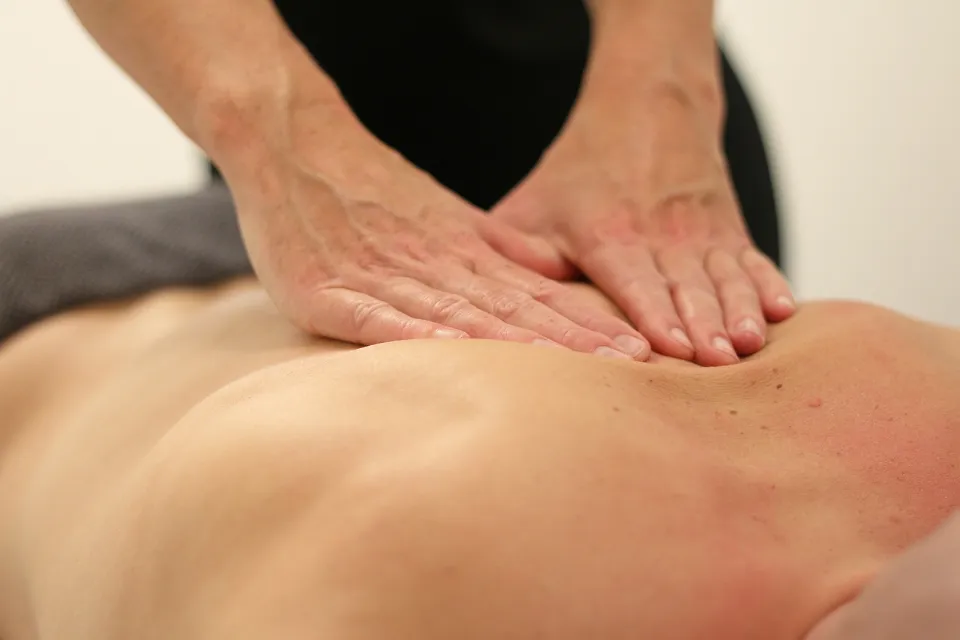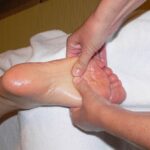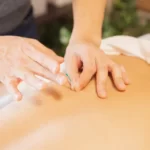Sore After Deep Massage: Why This Happens and What to Treat

When experiencing muscle aches, tension, and soreness, many people seek relief, seek to remedy the situation, or seek pain management through massage. In contrast, you might be wondering why it occasionally hurts after a massage when you thought it was supposed to make you feel better. Fear not, in this article we’re going to explain when it’s okay to feel sore after your massage and when it’s not okay. Knowing what to do to relieve the soreness and whether your massage therapist needs to be informed are also helpful.
What is Post Massage Soreness?
After a deep tissue massage, it’s typical to feel sore the next day. While the majority of clients experience soreness the following day, some clients report feeling achy right away. The muscle ache can last hours or days depending on the treatment, your body reaction and how well the ache is managed. Post massage muscle ache is mostly associated with remedial and sports massage where the intention of the treatment was to challenge muscular restrictions. In order to regain movement, comfort, and relaxation, these treatments aim to reset the default muscle state.
What Causes Me to Feel Sore After a Deep Tissue Massage?
Following a massage, your muscles may feel sore because the soft tissues have been worked on to release adhesions, knots, and holding patterns and return your muscles to a functional state. Muscle groups and tissue can tangle and require firm pressure to be applied during a massage in order to coax them back into a relaxed, untwisted state. Usually the more chronic or stubborn the condition is the more depth needed to challenge it to get it moving. Just like with a heavy exercise workout, the soft tissues can feel the effects of “good hurt” by feeling sore and needing time to repair the resulting mini traumas afterwards.
Key Factors of Muscle Soreness
Here are some of the key factors for why you might feel sore after a sports massage:
- Dehydration
- Increased muscle tension & tightness
- Prolonged poor postural positions
- High stress levels
- 1st time massage / first massage for a few months
The important healthy equilibrium that keeps our muscles mobile, flexible, and healthy is disturbed by all of these factors, which increases the likelihood that you will feel sore after receiving a sports massage. However, sports massage will start to stabilize this crucial equilibrium in your body so you can feel, move, and live better when combined with the aftercare tips our therapists offer.
Why Do Some Massages Hurt?
Each person’s body is different, and each person’s body reacts to massage therapy differently. After a light, soothing procedure like a Swedish massage, it is highly unlikely that you will feel sore. Regular recipients of Deep Tissue, Sports, and Remedial massage often report little to no after-effects, whereas a non-regular recipient who uses massage to treat muscle pain, an injury, or a chronic condition may feel very uncomfortable. “Pain is resistance to change” and it is the job of your remedial massage therapist to challenge your soft tissues. This is known as the therapeutic edge of “good hurt”, where release can happen by coaxing rather than forcing change. Some masseurs have a better sense of the therapeutic edge and can apply the right speed, depth, and pressure direction. A client’s response to a massage may occasionally differ from how they typically feel after receiving one due to environmental and chemical factors like stress, diet, and a woman’s period.
“No Pain No Gain” is Not a Healthy Massage Belief.
It is untrue, contrary to popular belief, that a good massage can’t work unless you feel pain. In fact, usually “less is more” would be a more accurate statement to describe how much challenge should be experienced during a massage treatment. There is a fine line between applying just enough pressure to move the client along and applying too much pressure, which can cause a client to tense up and hold their breath. The key is to breathe; if you’re in so much pain during a treatment that you’re unable to do so, you should tell the therapist to back off. This type of “no pain is no gain” will not serve you and may cause other painful symptoms to appear in the muscles you tensed up when having to escape from the high of treatment pain.
Am I Worse After My Massage Than before It?
A common fear that a client may have when experiencing post massage muscle pain is “Had my therapist hurt me if I wasn’t already sore?” In cases where extreme treatment pain resulted in the need to tense up to endure it, it may be true. However, remedial or “fixing” massage is not a one treatment fix. If you only want to have one treatment to achieve pain relief, you must inform your massage therapist so that they can use lighter pressure to ease the symptom rather than to challenge change in the muscles. The course of treatments for remedial massage is effective. Typically, you will know whether your treatment goal can be achieved or has been after the second or third treatment; you should also know how many sessions are still required. Pain occasionally worsens before improving because fixing is a nature of pain. In addition to removing scar tissue and correcting muscle imbalances, we are encouraging new ranges of motion. Symptoms frequently change throughout this process, and dysfunctional muscles do experience pain as they are forced to function once more, just like they would during exercise.

How Long Does It Take to Recover from a Sports Massage?
It really varies from person to person how long you’ll still feel sore after a massage. Depending on how new you are to sports massage, how frequently you receive it, and your general lifestyle, such as hydration, stress levels, and activity levels, you may experience soreness for one to three days in general. It is important to note that the more consistent you are with sports massage, the less sore you’ll feel afterwards.
Going back to the exercise comparison, after your first 5K run, it feels like you’ve been hit by a train, but after a few weeks of consistent 5K runs, your body starts to adapt and tolerates the activity much more effectively. A sports massage works the same way exactly!
You should rest for at least a few hours after getting a massage to help your body return to normal. How Long Should You Rest After a Sports Massage? is a recent article we published.’ We go over the advantages of taking it easy after a massage and how long you ought to. If you’re thinking about getting a massage, we suggest reading the article.
How to Manage Post Massage Soreness
Muscle guarding is the term used to explain how our brain responds when we experience pain, ache or soreness after a massage. It is the unintentional tightening of painful muscles to guard the sore area. Unfortunately, doing so negates the positive effects of the massage and starts a new, sometimes worse, pain cycle because the sore muscles that are currently healing are now required to work nonstop. As you might imagine, this is a problem that affects all massage therapists, and if the client doesn’t ask for clarification, even highly qualified therapists may come off as lacking skill. You can lessen post-massage soreness by taking a hot bath with Epsom salts, staying off your feet for the rest of the day, and rinsing your body with water. If pain persists, it can be very useful to take a pain killer to break the pain cycle, to enable the brain to relax the “worked on muscles” – meaning that they feel better and start warming up as they benefit from normal everyday activity.
FAQs About Deep Tissue Massage
Most people who are unfamiliar with deep tissue massages have many questions about these treatments. Here’s a quick look at some of the most common questions people ask regarding the pains and aches that sometimes follow an intense massager.
What Happens During a Deep Tissue Massage?
Different deep pressure techniques are used by massage therapists on muscles all over your body. They frequently use acupressure on specific points to release muscle knots. They typically pay more attention to stressed-out, rigid muscles.
When Should I Contact a Doctor?
While pain and stiffness may last for a day or two in some cases after deep tissue massages, they should not impair your ability to move normally. If an injury occurs while receiving treatment or if you experience a sudden, severe pain in your muscles after receiving a massage, you should seek medical attention.
Bottom Line
It can be intimidating to think about what to do if you experience pain after receiving a deep tissue massage. There are many different ways to relieve the pain and side effects of deep tissue massages, so don’t worry if you experience pain after receiving one. Rest assured that this is completely normal.









